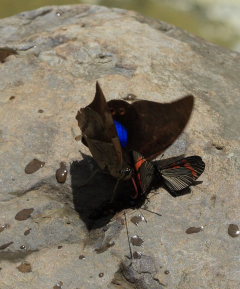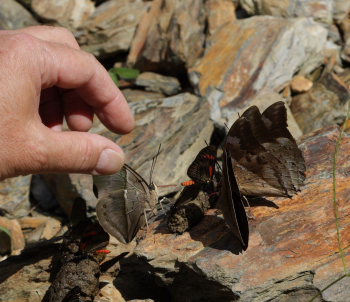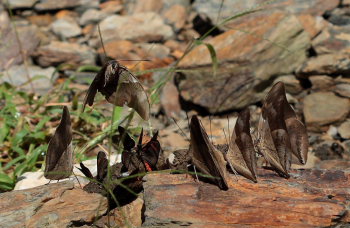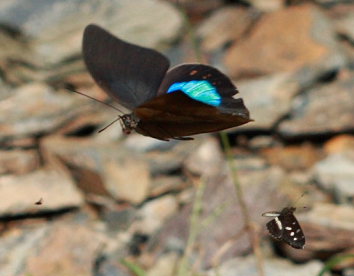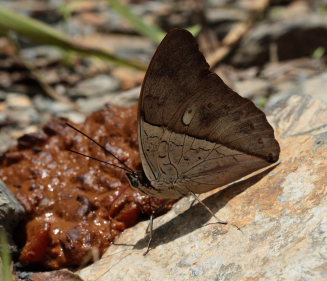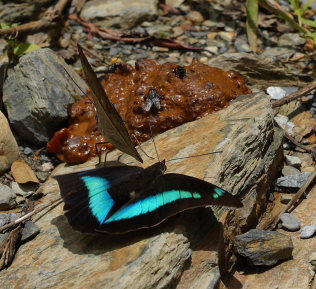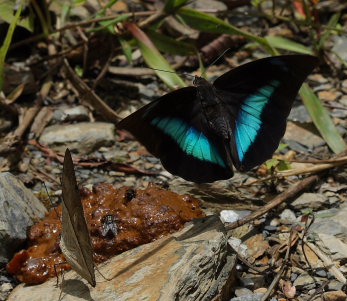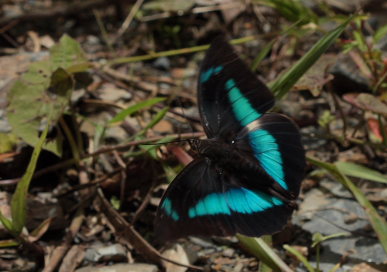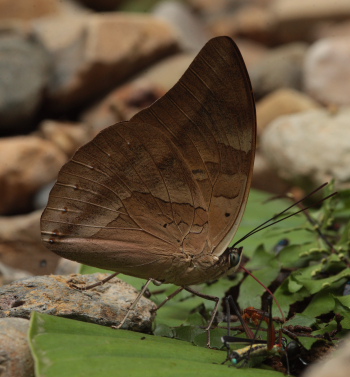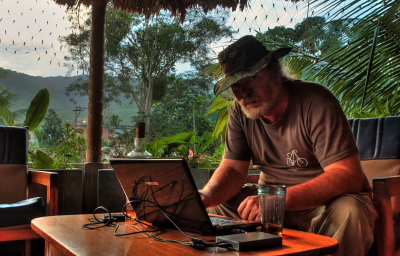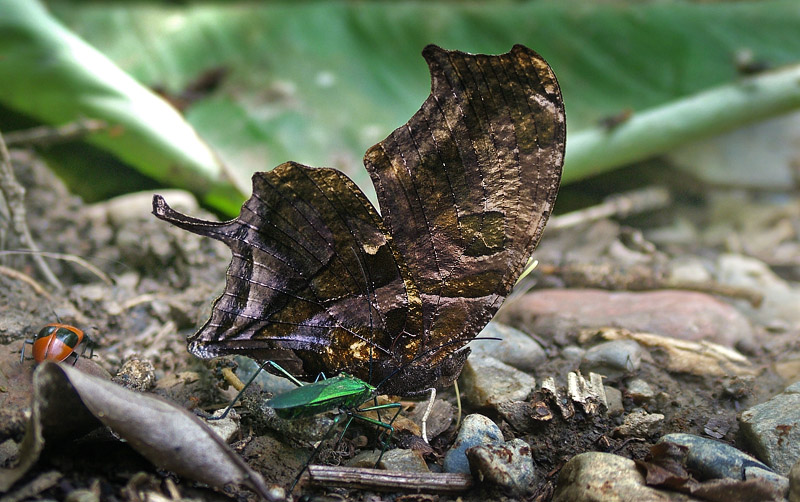Mariposas de Bolivia
sitio 61
first update d. 12 january 2010
last update d. 29 november 2021
Redactor: Lars Andersen
bajo construccion
Charaxinae
Anaeini and Preponini.
_________________________
King Leafwing, Polygrapha tyrianthina (Salvin & Godman, 1868) and Memphis iphis (Latreille, 1813).
Kori Wayku inca trail (2100 m.), Coroico, Yungas, Bolivia
february
1-3, 2010.
Photographer; Lars Andersen
Magnificent Leafwing, Coenophlebia archidona (Hewitson, 1860).
Caranavi, Yungas, Bolivia february 9, 2007. Photographer; Lars Andersen
Magnificent Leafwing, Coenophlebia archidona. Old hotspot near near Caranavi, Yungas, Bolivia december 8, 2018. Photographer; Peter Møllmann
| The Charaxinae (357) are a group of robust,
medium to large Nymphalids characterised by
having a rapid and very powerful flight, stout
bodies and strong wings. They are represented with one Charaxes species in Europe. In Africa by Tribe Charaxes (179), Tribe Palla (4) and Tribe Euxanthe (6). In the Oriental and Australian regions by Tribe Polyura (24) Tribe Prothoini (4) and Tribe Charaxes (19). Total: 234 species And in the neotropics by genera- Tribe Anaeini; Anaea (3), Coenophlebia (1), Zaretis (6), Siderone (2), Hypna (1), Polygrapha (4), Consul (4), Memphis (67), Fountainea (10) Total: 98 species Tribe Anaeomorphini; Anaeomorpha (1). Tribe Preponini; Prepona (Agrias) (12), Archaeoprepona (Noreppe) (9). Total: 21 species |
Lars Andersen on riwer and Peter Møllmann on suspension
bridge, Caranavi,
Yungas january 1, 2010. Photographer; Peter Møllmann & Lars Andersen
Meander
Prepona, Archaeoprepona
meander (Cramer,
1775). Caranavi, Yungas january 12, 2010. Photographer: Lars Andersen
Claudina Agrias, Agrias claudina lugens and White-spotted Prepona, Archaeoprepona amphimachus.
Caranavi, Yungas january 27, 2010. Photographer; Lars Andersen
White-spotted
Prepona, Archaeoprepona
amphimachus and
back; Meander Prepona, Archaeoprepona meander.
Caranavi, Yungas january 28, 2010. Photographer; Lars Andersen.
Meander
Prepona, Archaeoprepona
meander.
Caranavi, Yungas january 29, 2010. Photographer; Lars Andersen
Two-spotted Prepona, Archaeoprepona demophoon ssp. andicola. Caranavi, Yungas january 27-29, 2010. Photographer; Lars Andersen
Least Prepona, Prepona dexamenus tre male. Caranavi, Yungas january 12,26 and 16, 2010. Photographer; Lars Andersen
Yellow-tufted Prepona, Prepona laertes tre male. Caranavi, Yungas january 26, 13 and 16, 2010. Photographer; Lars Andersen
Narrow-banded Shoemaker, Prepona eugenes ssp. laertides four male. Caranavi, Yungas january 16, 16. 13 and 17, 2010. Photographer; Lars Andersen
Pheridamas Prepona, Prepona pheridamas. Rio Rufus, Yungas, Bolivia february 1, 2011. Photographer; Peter Møllmann
Red
Blue Shoemaker, Prepona praeneste ssp. buckleyana. Caranavi Highlands, Yungas,
Bolivia january 9, 2012. Photographer; Peter Møllmann
Archaeoprepona and Prepona The Archaeoprepona and Prepona are very similar on the
upper surface, black to being chocolate brown
with bands of dazzling blue or turquoise. The 2
genera can easily be distinguished by examining
the underside hind-wings - in Archaeoprepona there is a tiny
submarginal ocellus (eyes) in each cell, but in Prepona the ocellus near the
apex, and the one near the tornus (the muscular
middle section of an insect's body, which acts as
an anchor for the legs, wings, head and abdomen),
are both greatly enlarged. Androconia; Specialised wing scales in male butterflies, from which pheromones are disseminated to attract or convey chemical messages to females. Both genera are noted for their red proboscises (red tube). Habitats Lifecycle Annonaceae, also called the custard apple family is a family of flowering plants consisting of trees, shrubs or rarely lianas. Malpighiaceae is a family of flowering plants in the order Malpighiales. It comprises approximately 75 genera and 1300 species, all of which are native to the tropics and subtropics. About 80% of the genera and 90% of the species occur in the New World (the Caribbean and the southernmost United States to north Argentina). The larvae have
a prominent thoracic hump, and are dark brown on
the thorax (body) and below the spiracles (breathing
holes), the remainder being pale brown. The head
bears a pair of stout recurved horns. The pupa is
bluish green with irregular white spots
resembling lichen, and is ovoid in shape with a
prominent thoracic bulge. It is suspended by the
cremaster (Tiny hooks at the tip of the abdomen
of a pupa, used to secure the pupa to a silk pad
spun by the caterpillar) from a leaf or twig. The butterflies have an agile and very powerful flight, and are only active in hot sunny conditions. They commonly feed at sap runs, and also attend carrion, dung and rotting fruit on the forest floor. I have seen up to 4 different species on the animal excrement and suction. If a fly sit on their wings, they can pat it away. White-spotted Prepona, Archaeoprepona
amphimachus. Males often sit facing head-downwards and with wings half open, on narrow tree trunks at heights between about 2-4 metres, and from this position watch for potential mates. Often one can see them in fights with other Nymphalidae in the air. They are probably the fastest butterflies in the world? _________________________ Bibliography and reference |
Red Blue Shoemaker, Prepona praeneste ssp. buckleyana. Caranavi Highlands, Yungas, Bolivia january 9, 2012. Photographer; Peter Møllmann
Red Blue Shoemaker, Prepona praeneste ssp. buckleyana (Hewitson, 1876). Caranavi Highlands, Yungas, Bolivia november 21, 2021 Photographer; Peter Møllmann
Peter
Møllmann; I
had 2 wonderful days in the highlands near
Caranavi. |
Orange-spotted Prepona, Prepona deiphile ssp. xenagoras. Caranavi Highlands, Yungas, Bolivia january 12-18, 2013. Photographer; Peter Møllmann
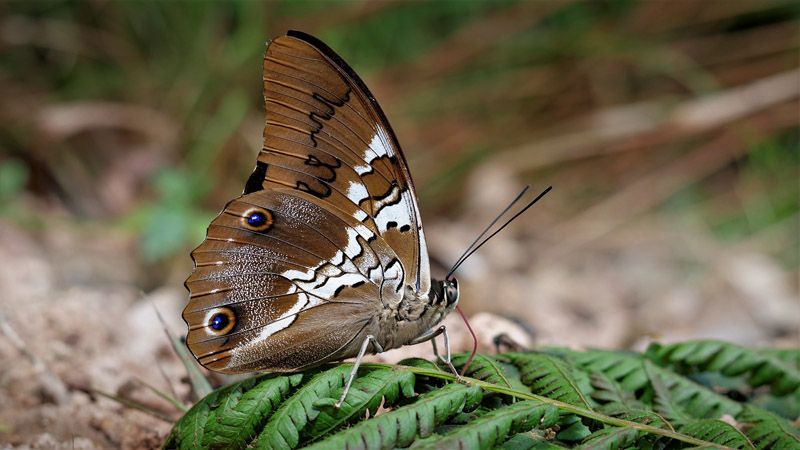
Orange-spotted
Prepona, Prepona deiphile ssp. xenagoras (Hewitson, 1875)
male. Caranavi Highlands, Yungas, Bolivia december 11, 2018. Photographer; Peter Møllmann
Orange-spotted Prepona, Prepona deiphile ssp. xenagoras (Hewitson, 1875) male. Caranavi Highlands, Yungas, Bolivia december 11, 2018. Photographer; Peter Møllmann
Two-spotted Prepona, Archaeoprepona demophoon ssp. andicola. Caranavi, Yungas january 19, 2010. Photographer; Lars Andersen
Cramer's Shoemaker, Archaeoprepona licomedes male. Caranavi, Yungas, Bolivia january 22-29, 2010. Photographer: Lars Andersen
One-spotted Prepona, Archaeoprepona demophon ssp. muson. Caranavi, Yungas january 12, 2010. Photographer; Lars Andersen
Chromus
Leafwing, Archaeoprepona
chromus.
Caranavi Highlands, Yungas january 23, 2010. Photographer; Lars Andersen
Lars
Andersen working on
the Jatata inn hotel, Caranavi, Yungas january 18, 2010. Photographer; Lars Andersen
Archaeoprepona (Noreppa); there are 2 species. Archaeoprepona
(Noreppa)
chromus
(Guérin-Ménéville, 1844). Pheridamas
Prepona, Least
Prepona, White-spotted
Agrias, |
Tiger Leafwing, Consul fabius quadridentatus (Butler, 1874). Caranavi, Yungas d. 1 february 2006. Photographer; Lars Andersen
Tiger Leafwing, Consul fabius quadridentatus (Butler, 1874). Caranavi, Yungas d. 3 february 2006. Photographer; Lars Andersen
|
link to Neotropical Butterflies of Will Carter and Kim Garwood, Metalmarks
link to Esmeralda hotel, Coroico, Yungas
dont use this pictures without permission from:
photographer © Lars Andersen
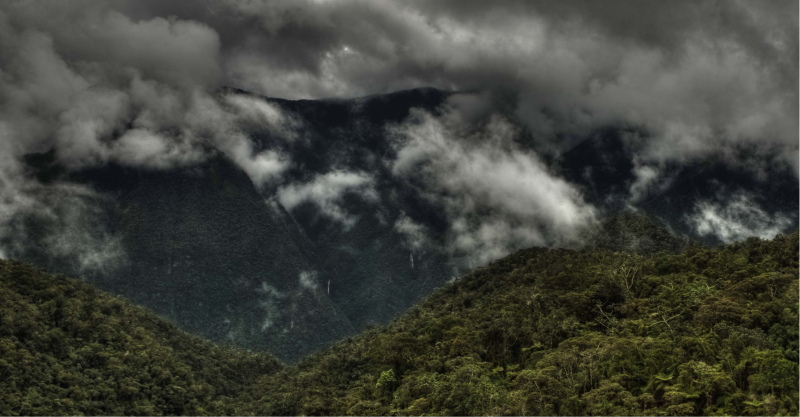
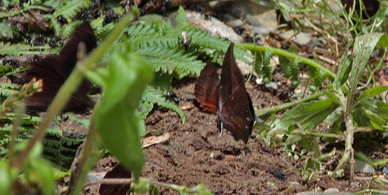
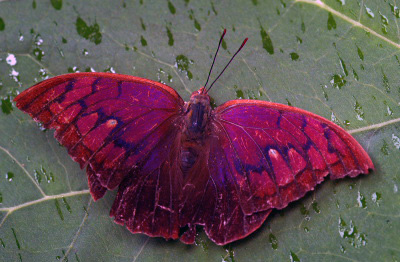
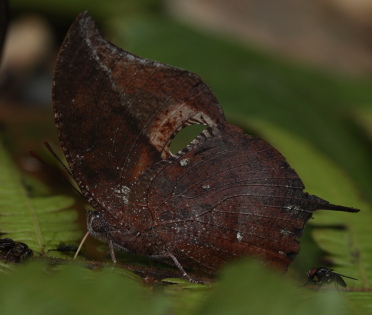
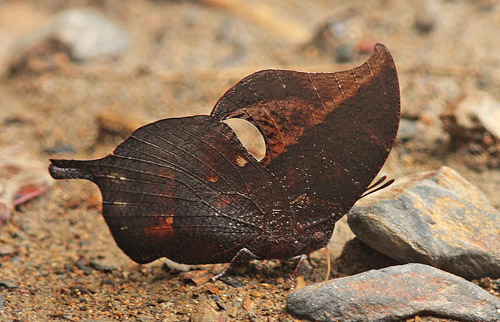
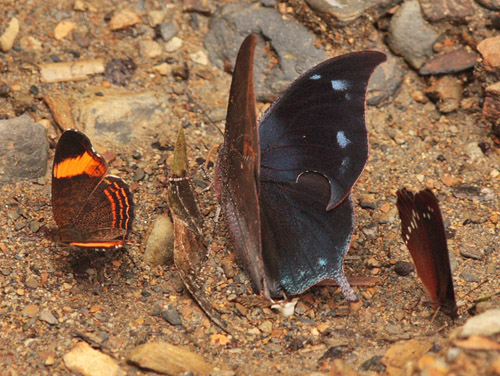
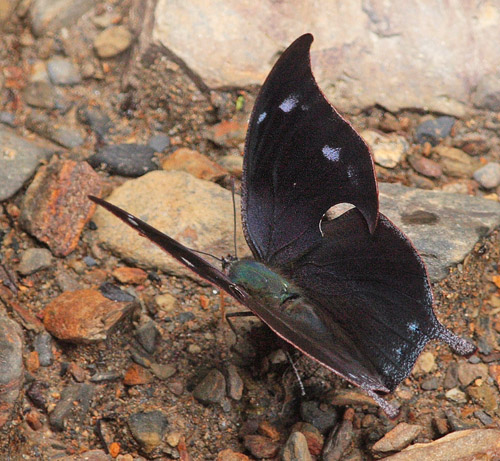
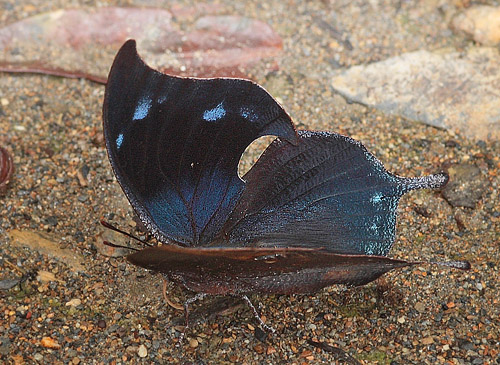

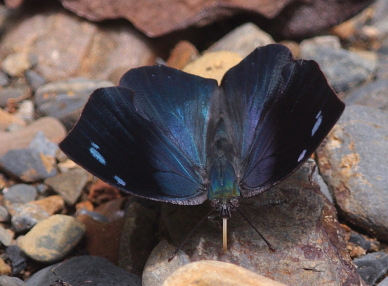
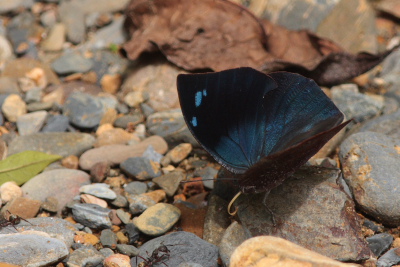
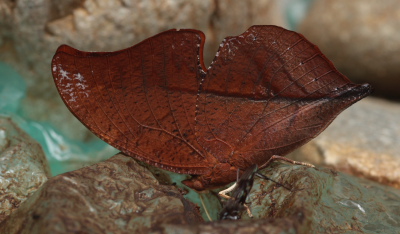
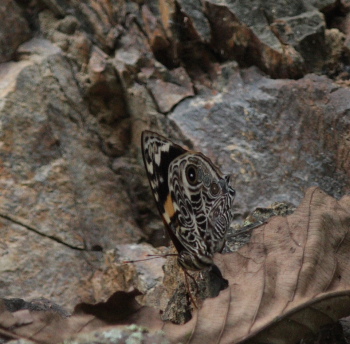
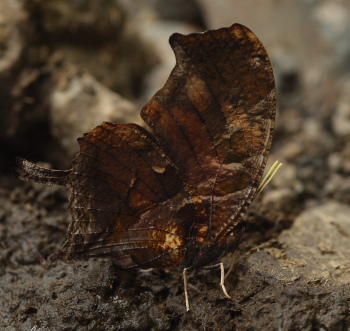
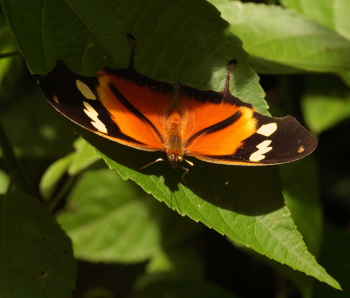
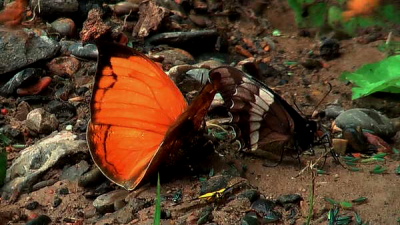

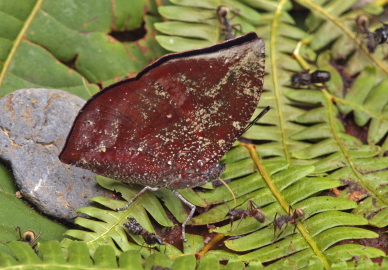
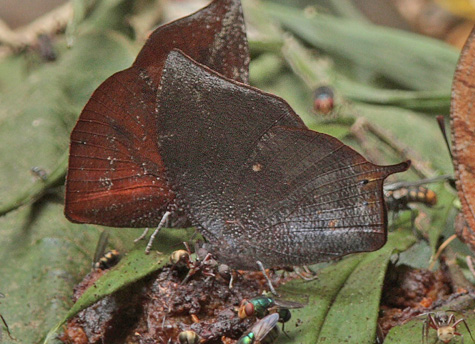
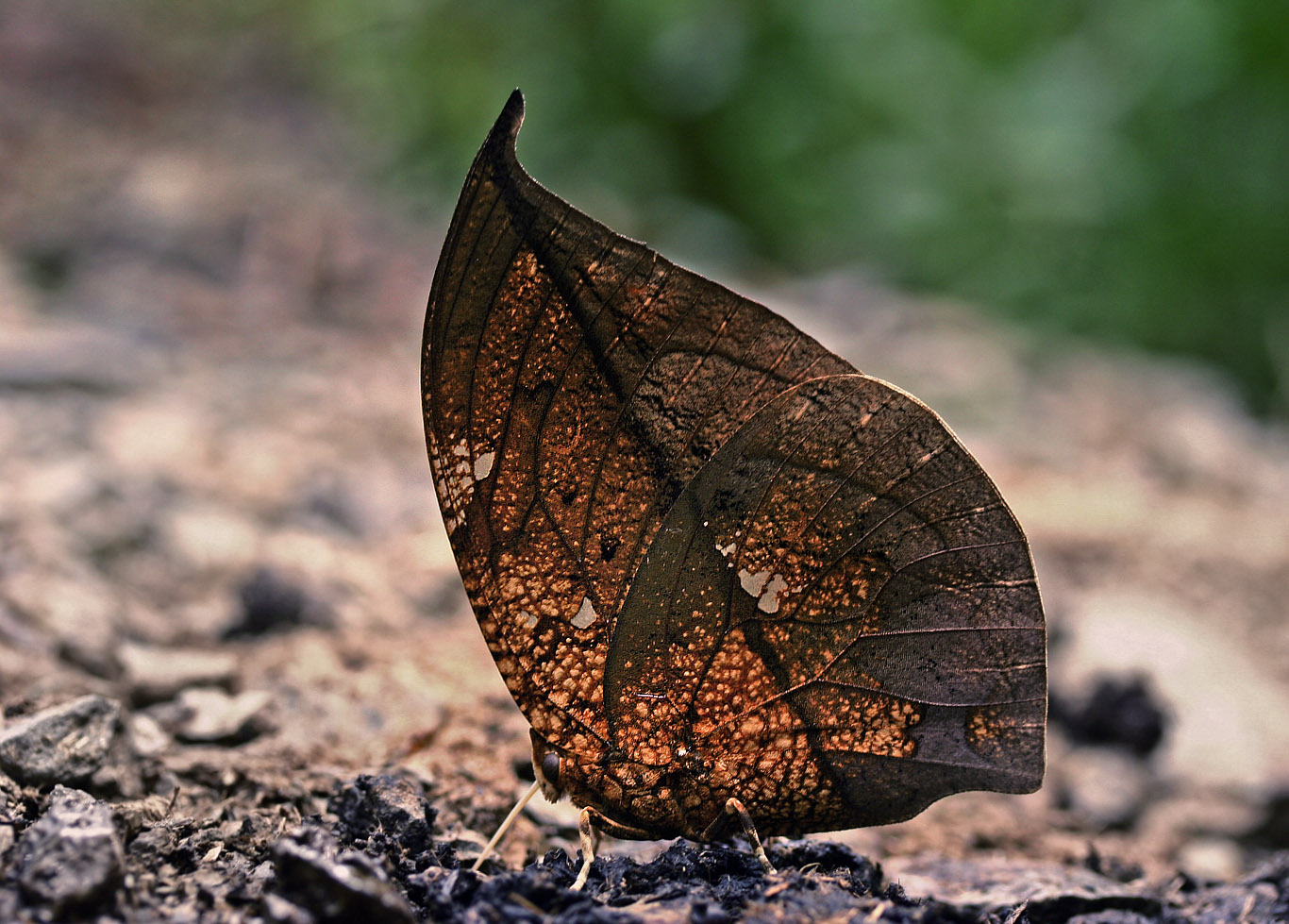
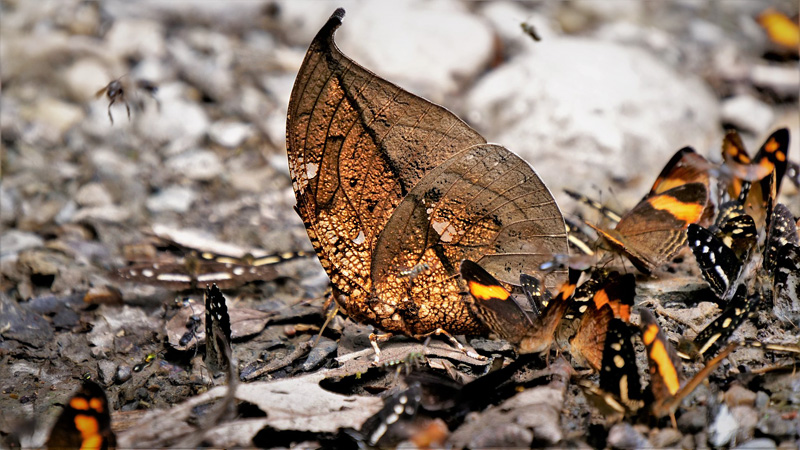
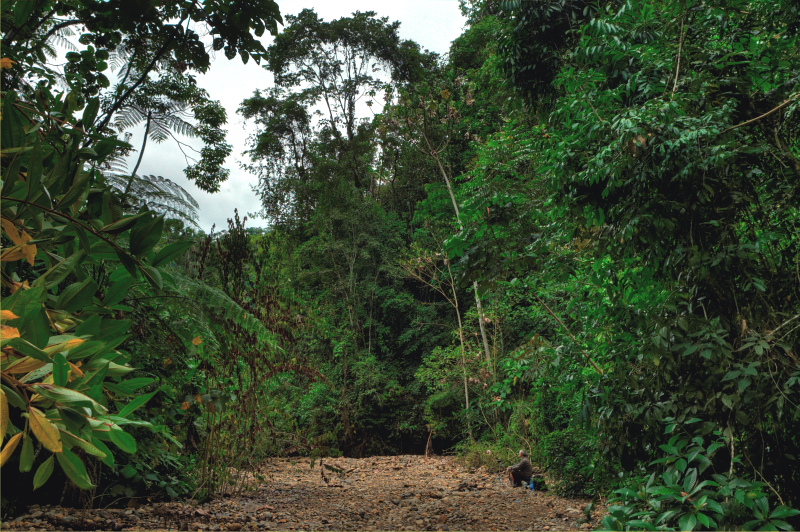


![Archaeoprepona meander (Cramer, [1775]). Caranavi, Yungas. d. 12 january 2010. Photographer: Lars Andersen](images33/ble100259s.jpg)
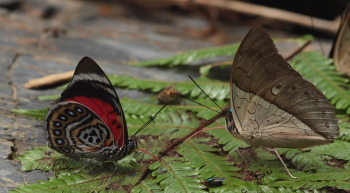
![Archaeoprepona amphimachus (Fabricius, 1775) and back; Archaeoprepona meander (Cramer, [1775]). Caranavi, Yungas. d. 28 january 2010. Photographer: Lars Andersen](images33/ble101320s.jpg)
![Archaeoprepona meander (Cramer, [1775]). Caranavi, Yungas. d. 29 january 2010. Photographer: Lars Andersen](images33/ble101455s.jpg)
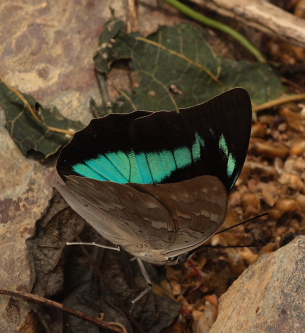
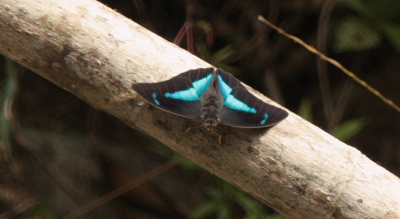
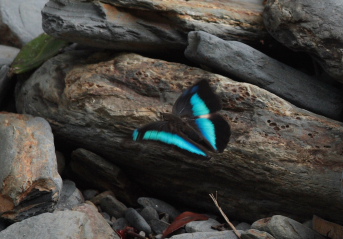
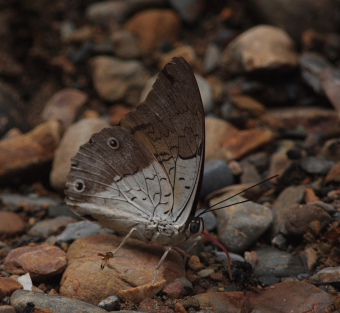
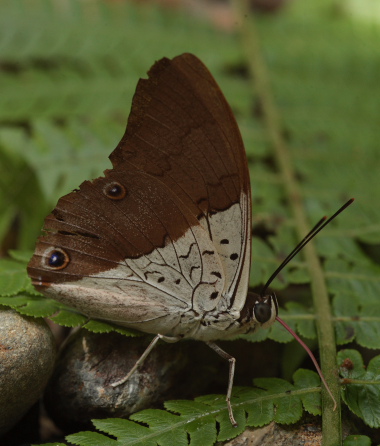
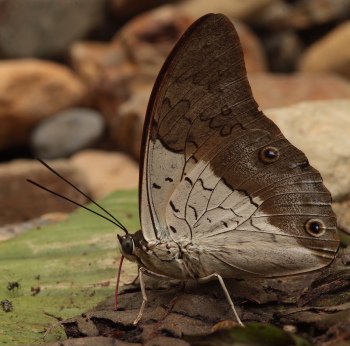
![Prepona laertes (Hübner, [1811]). Caranavi, Yungas. d. 26 january 2010. Photographer: Lars Andersen](images33/ble102920s.jpg)
![Prepona laertes (Hübner, [1811]). Caranavi, Yungas. d. 13 january 2010. Photographer: Lars Andersen](images33/ble109936s.jpg)
![Prepona laertes (Hübner, [1811]). Caranavi, Yungas. d. 16 january 2010. Photographer: Lars Andersen](images33/ble100475s.jpg)
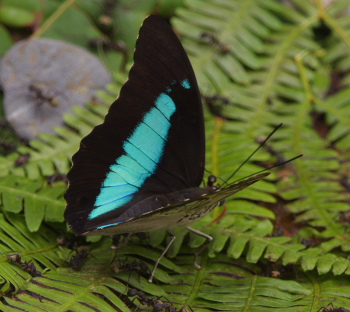
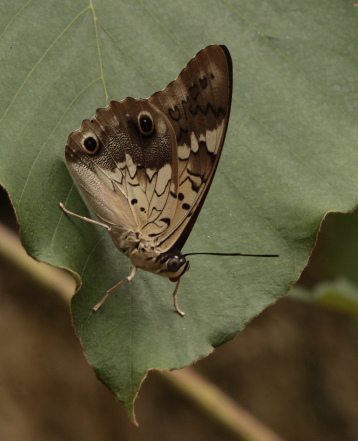

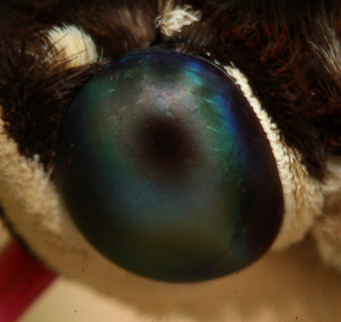
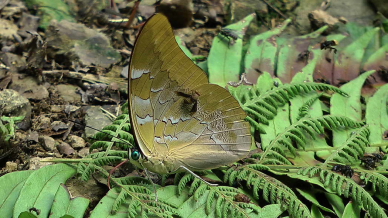
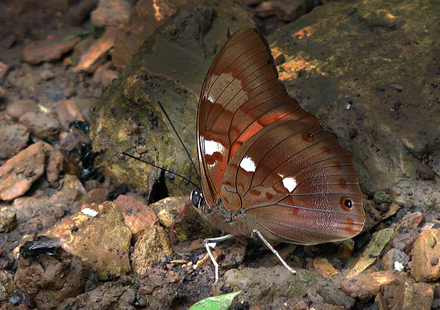
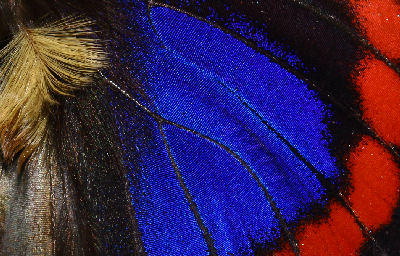
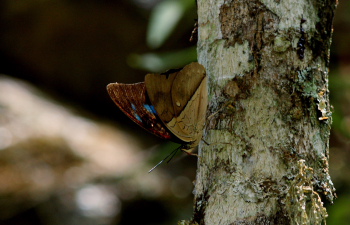
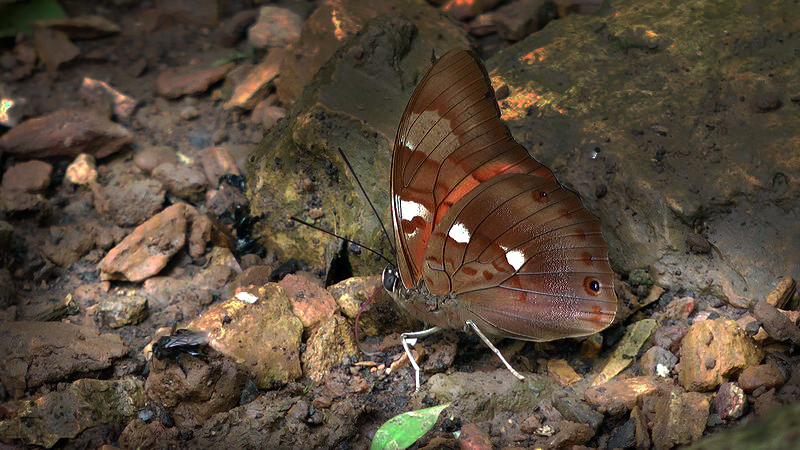
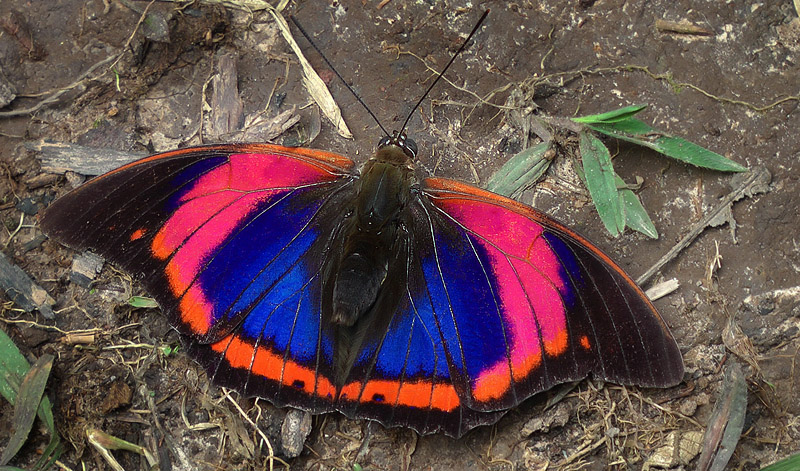
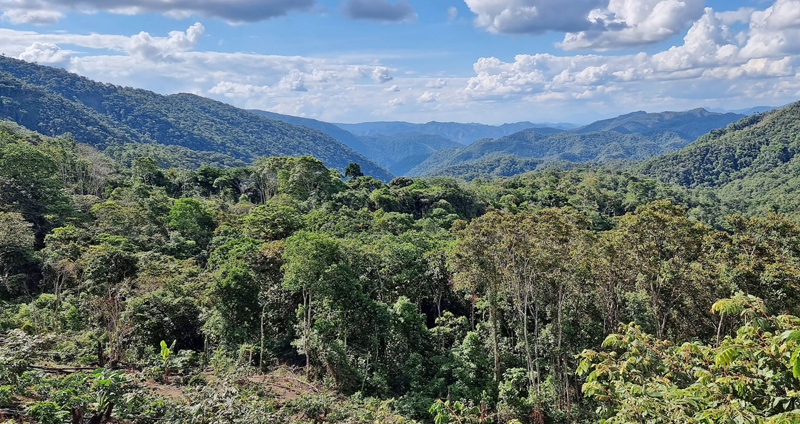

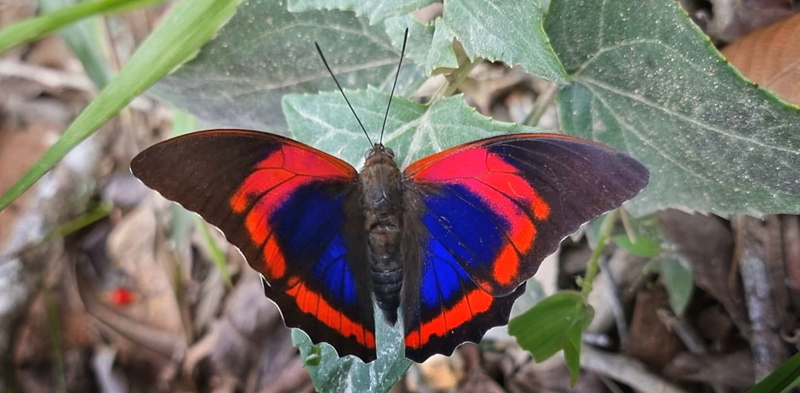
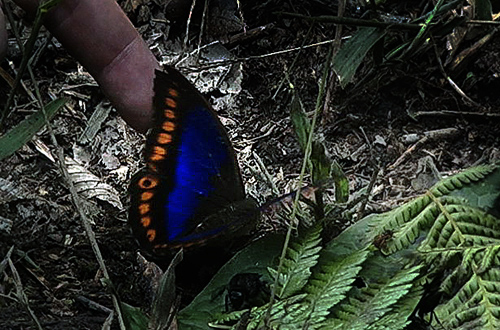
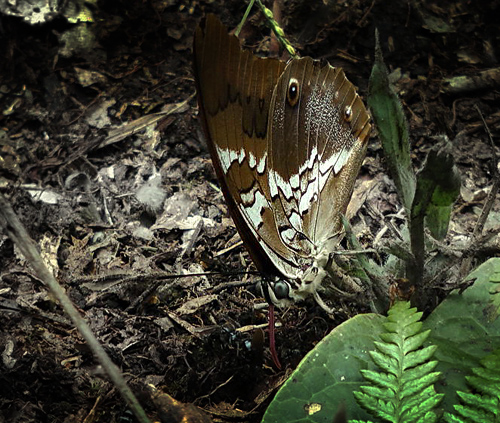

![Archaeoprepona demophoon (Hübner, [1814]). Caranavi, Yungas. d. 19 january 2010. Photographer: Lars Andersen](images33/ble100899s.jpg)

![Archaeoprepona demophoon (Hübner, [1814]) and -. Caranavi, Yungas. d. 19 january 2010. Photographer: Lars Andersen](images33/ble100891s.jpg)
![Archaeoprepona licomedes (Cramer, [1777]). Caranavi, Yungas. d. 22 january 2010. Photographer: Lars Andersen](images33/ble100772s.jpg)
![Archaeoprepona licomedes (Cramer, [1777]). Caranavi, Yungas. d. 22 january 2010. Photographer: Lars Andersen](images33/ble100775s.jpg)
![Archaeoprepona licomedes (Cramer, [1777]). Caranavi, Yungas. d. 29 january 2010. Photographer: Lars Andersen](images33/ble101438s.jpg)
